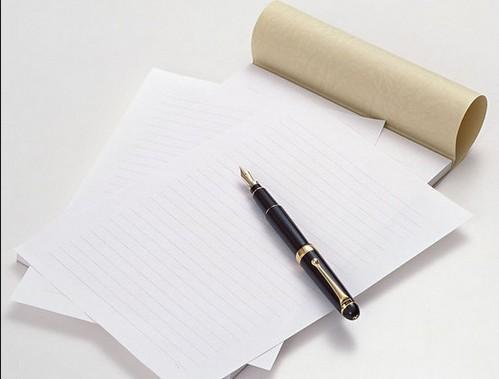Research,on,Zhuang,Medicine,Scheflera,kwangsiensis,Merr.,ex,Li
Can LI Ao XIE Yongjing SU Wenyi WEI Gan LUO Haicheng WEN Wei WEI
Abstract Zhuang medicine Scheflera kwangsiensis Merr. ex Li is a plant of Schefflera in Araliaceae, and its roots, stems and leaves are used as a medicine. In order to fully understand the development and utilization of S. kwangsiensis resources, we analyzed and summarized literatures on crude drug research, planting distribution, harvesting and processing, chemical components, pharmacological effects and quality testing of S. kwangsiensis, aiming to provide a reference basis for establishing the quality standard of Zhuang medicine S. kwangsiensis.
Key words Zhuang medicine; Scheflera kwangsiensis Merr. ex Li; Chemical component; Quality standard
Received: December 25, 2020 Accepted: February 24, 2021
Supported by Guangxi Key R&D Program (GK AB19110027); High-level Innovation Team and Outstanding Scholars Program of Guangxi Colleges and Universities: Zhuang Medical Foundation and Clinical Research Innovation Team (GJR[2014]07).
Can LI (1999-),P. R. China, major: traditional Chinese medicine, devoted to research about identification and quality evaluation of ethnic medicine and traditional Chinese medicine.
*Corresponding author. E-mail: wenhaicheng2015@qq.com; 65462479@qq.com.
The sources of the Zhuang medicine Ezhangcai are the roots, stems and leaves of Scheflera kwangsiensis Merr. ex Li of Araliaceae[1]. S. kwangsiensis belongs to Tonglonglu and Huolu types of Zhuang medicine[2]. It is also known as Guangxi Yajiaomu (Guangxi Plant List), Qiyelian, Hantaoye (Guangxi), Qijiafeng (the Dong language in Sanjiang, Guangxi), Jijinzhan (the Jing language in Fangcheng, Guangxi), Miaoliudui (the Maonan language in Huanmen, Guangxi), Gousui (the Duyao language in Guangxi), Feidahan, Feidingbi, Kefeidang, Qiduo (the Zhuang language of Guangxi)[3]. It has the effects of dispelling wind and relieving pain, stimulating the circulation of the blood and causing the muscles and joints to relax, and eliminating stasis to subdue swelling, and is used for treating trigeminal neuralgia, stomach pain, rheumatic heart disease, premenstrual abdominal pain, neuropathic headache, abdominal pain, sciatica, dysentery, edema, venomous snake bites, fractures, bruises, etc.[4]. This paper summarized the relevant literatures of the Zhuang medicine S. kwangsiensis, analyzed its research process, and provides a theoretical basis for the establishment of the quality standard, resource development and rational use of the Zhuang medicine S. kwangsiensis.
Crude Drug Research
The drug name of S. kwangsiensis is listed in Flora of China[5]. It is an evergreen shrub, sometimes climbing, about 2 m high. The twigs are glabrous. The leaves are alternate, and the palmately compound leaves usually have 5 to 7 leaflets, which are lanceolate or oval-lanceolate, 5-10 cm long and 1.5-3.0 cm wide. The leaflets are acuminate at the apex, and the acuminate part is less than 1 cm in length; the margin is entire; and they are hairless on both sides. The petiole is 4-8 cm long; the petiolule is 0.5-2.5 cm long; and they are all pubescent when young, and quickly become glabrous. The flowers are light yellow, and the panicles grow on the top of branches, and are about 12 cm long; the pedicel is about 2 mm long, glabrous; each flower has 5 petals and 5 stamens; the ovary has 5 locules; and there is no style, but 5 stigmas grow directly on the ovary. The fruit is ovoid, glabrous, about 5 mm in diameter, orange-yellow when mature, and has 5 ridges when dried. The flower and fruit period is summer and autumn[6]. Hantaoye and Qiyelian are the dry stems with leaves of S. kwangsiensis belonging to Araliaceae[7]. According to Chinese Pharmacopoeia (first volume of 1977), in order to avoid confusion between S. kwangsiensis of Scheflera in Araliaceae and Stauntonia chinensis DC of Stauntonia in Lardizabalaceae (also known as Qiyelian), S. kwangsiensis was named "Hantaoye". After consulting a large amount of information, the name "Qiyelian" is still more common, and there are still many plants of Schefflera called Qiyelian in different regions, mainly: S. octophylla Harms. (Guangdong, Guangxi, Yunnan), S. glomerulata L. (Guangxi, Guangdong, Yunnan), S. arboricola Hayata (Guangdong), and S. vemulosa Wight et Arn. (Yunnan). Attention should be paid to the identification[8] of Schefflera plants to prevent the occurrence of mixed use of medicinal materials.
Planting Distribution
S. kwangsiensis is widely distributed in various parts of Guangxi, such as Wuming and Fusui. The plants grow under forests or on rocky mountains, and most of them are uncultivated. At present, the large-scale artificial planting of S. kwangsiensis in Guangxi has not been carried out, and research on its afforestation and seedling cultivation has not been reported. However, related scholars have carried out research on the selection of fertilization methods and fertilization amounts[9] and the effects of applying different fertilizers[10] on the growth of Qiyelian seedlings, and determined the best fertilization combination as "urea+superphosphate". Different treatment methods were used to study the rooting conditions of Qiyelian cuttings[11], and it was concluded that the cutting length of 10 cm and 300 mg/L indolebutyric acid had good rooting effect and could be promoted and used in production.
Harvesting and Processing
S. kwangsiensis can be harvested throughout the year, washed and dried for later use. The Zhuang medicine has the efficacy of dredging Tonglonglu and Huolu, dispelling wind toxin, dispelling blood stasis and relieving pain, and is mainly used for treating rheumatism and bone pain, numbness of limbs, scapulohumeral periarthritis, and cervical spondylosis, bruises, and lumbago. It tastes sweet, slightly bitter, and is cool in nature[2]. As a Chinese medicine, its nature and flavor are pungent, mild, mildly toxic, and it is effective in dispelling wind and dampness, relaxing muscles and collaterals, dispersing blood stasis and relieving pain, and is used for rheumatic bone pain, numbness of limbs, and bruises[12].
The preparation methods are as follows:
Raw product: The roots are washed to remove impurities, cut into slices, and sun-dried. The stems and leaves are into cut inch sections.
Wine simmering (Tujia): Qiyelian is cut into slices, and wrapped together with a proper amount of distilled grain with Japanese banana leaves to simmer. Or Qiyelian can be stir-fried with wine. The simmered Qiyelian can be used for treating bruises by applying on the affected area.
Preparation with wine, vinegar, salt and ginger: Qiyelian slices are soaked with the above 4 kinds of juices for 2 h, taken out, and fried until it is browned, followed by taking out, air-drying and storing for later use.
The effects of preparation: Liquor preparation has the effects of promoting blood circulation and relieving pain and dispelling rheumatism. The four-liquid system has the effects of invigorating the circulation of blood, remove blood stasis, relieve pain and remove rheumatism[13].
Chemical Composition Research
The compound types of Schefflera plants include triterpenes and their glycosides, volatile oils, organic acids, sterols, long-chain olefins, alkaloids, flavonoids and other compounds. According to the records in Dictionary of Chinese Clinical Medicines·Volume of Chinese Medicine Decoction Pieces, the main components of S. kwangsiensis (Hantaoye) are triterpene saponins, and it also contains a variety of organic acids, flavonoids, steroids, quinones, volatile oils, etc. Among them, triterpene saponins are the main pharmacologically active ingredients[14].
Triterpenoids and their glycosides
Zhang[15] sorted out and summarized the main active substances and main chemical substances of Schefflera plants, including pentacyclic triterpenes and their glycosides, and determined that the pentacyclic triterpenoids in this genus are mainly oleanane type andlupinane.
MELEK et al.[16] separate 9 kinds of triterpene saponins such as 3-O-[α-L-rhamnopyranosyl-(1→4)-β-D-glucuronopyranosyl] oleanolic acid①, 3-O-[α-L-rhamnopyranosyl-(1→4)-β-D-glucuronopyranosyl]echinocystic acid②, 3-O-[β-D-pentofuranosyl-(1→4)-β-D- glucuronopyranosyl]oleanolic acid 28-O-β-D-glucopyranosyl ester ③, 3-O-α-L-xylopyranosyl-(1→4)-[α-L-arabinopyranosyl-(1→2)-]β-D-glucuronopyranosyl- arachidonyloleanolic acid④, 3-O-α-L-rhamnosyl-(1→4)-[α-L-arabinopyranosyl-(1→2)-]β-D-glucuronopyranosyloleanolic acid 28-O-β-D- glucopyranosyl ester ⑤, 3-O-α-L-hamnopyranosyl-(1→4)-[β-D- pentofuranosyl -(1→2)-]β-D-glucuronopyranosyloleanolic acid ⑥, 3-O-α-L- rhamnosyl-(1→4)-[β-D- pentofuranosyl -(1→2)-]β-D-glucuronopyranosyloleanolic acid 28-O-β-D- glucopyranosyl ⑦, 3-O-β-D-pentofuranosyl-(1→4)-[α-L-arabinopyranosyl-(1→2)-]β-D-glucuronopyranosyloleanolic acid ⑧, 3-O-β-D- pentofuranosyl -(1→4)-[α-L-arabinopyranosyl-(1→2)-]β-D-glucuronopyranosyl ester ⑨ from the stems and leaves of Hantaoye by HPLC.
Volatile oil compounds
Xu et al.[17] extracted volatile oil from S. kwangsiensis by steam distillation, and then analyzed it by gas chromatography-mass spectrometry (GC-MS) technology. A total of 42 components were separated, and 18 of them were identified as main ones. The ingredients with a relative percentage content more than 5% included α-curcumene (15.484%), 1,4-dimethyl-8-isoproplderetricyclo[(5,3,0,0(4,10)]decane (11.028%), Eucalyptus spathulata olelenol (5.998%), and eudesum7[11]en4ol (9.229%).
THUC et al.[18] analyzed the volatile oil from the stems and leaves of Hantaoye by gas chromatography-mass spectrometry (GC/MS) technology and identified that the chemical components of the volatile oil from the stems and leaves of Hantaoye accounted for 80.41% and 93.23% of the volatile oil and leaf oil, respectively. The main components in the stem oil were caryophyllene oxide (29.21%), huperzine (10.30%) and epoxide II (6.27%); and the main components in the leaf oil were β-caryophyllene (23.05%), limonene (14.90%), caryophyllene (13.97%) and α-humulene (8.41%).
Organic acid compounds
Xu[19] separated 10 compounds from the water and ethanol extracts of dried stems and leaves of Hataoye, through various chromatographic methods (ion exchange resin, silica gel column chromatography, macroporous adsorption resin, gel column chromatography, ODS column chromatography, preparative thin layer chromatography, preparative liquid chromatography), and separated β-sitosterol and ursolic acid from Hantaoye through physical and chemical constant determination, spectral data analysis (UV, NMR, MS, etc.) and chemical identification for the first time. Shen et al.[20] used thin-layer chromatography and gas chromatography to qualitatively identify the alcohol extracts of Hantaoye, which showed that the Hantaoye medicinal materials contained fumaric acid, malonic acid, succinic acid, malic acid and other organic acid components.
Flavonoids
Ethanol can be used to extract flavonoids such as quercetin from Hantaoye[21]. Huang et al.[22] obtained the optimal conditions for the extraction process of the total flavonoids from Qiyelian by designing an orthogonal experiment using the ethanol reflux method: adding 8 times the amount of 80% ethanol, and heating and reflux-extracting twice, each time 1.5 h.
Agricultural Biotechnology2021
Pharmacological Action
Analgesic and anti-inflammatory effects
Studies have shown that through the establishment of xylene-induced ear swelling models in mice (1), carboxymethyl cellulose sodium (CMC-Na)-induced leukocyte migration acute inflammation model (2), acetic acid-induced mouse retortion response pain model (3), rat adjuvant arthritis model (4), in vitro inflammation model in RAW264.7 mouse macrophages induced by lipopolysaccharide (LPS) (5) and experimental observations, the total triterpenoids, volatile oils, organic acids and flavonoids in S. kwangsiensis all have analgesic and anti-inflammatory effects[22-26].
Antimicrobial effect
THUC et al.[18] used a micro-dilution method to determine the antibacterial activity in the oil from the stems and leaves of Hantaoye. The results showed that due to the high concentration of β-caryophyllene and caryophyllene oxide, it had a good antibacterial effect on Bacillus subtilis.
Quality Detection
Li et al.[27] used linoleic acid as the reference substance, chloroform-acetone (12∶1) solution as the developer, and 5% vanillin sulfuric acid solution as the color developer, heated the system at 105 ℃ until the spots were clearly colored, and checked the result in daylight to distinguish it from other Schefflera plants. Niu et al.[28] used ammonium phosphomolybdate colorimetric method and inductively coupled plasma mass spectrometry to determine the contents of phosphides in Chinese medicinal materials of Hantaoye from 10 different origins, and showed that using ammonium phosphomolybdate colorimetry to determine phosphate residue in Hantaoye medicinal materials was simpler, faster and more accurate. Pan et al.[29] used HPLC to establish a method for the determination of fumaric acid in Hantaoye, in which the HPLC was performed with methanol-0.2% phosphoric acid solution (5∶95) as the mobile phase at a flow rate of 1.0 ml/min and the detection wavelength was 210 nm, providing a theoretical basis for the quality control of S. kwangsiensis.
Conclusions
S. kwangsiensis is one of the commonly used medicines in Guangxi folk Zhuang medicine, which belongs to the Tonglonglu and Huolu medicines. Zhuang doctors use the single material for treating rheumatic pain, premenstrual abdominal pain, neuralgia, etc. S. kwangsiensis is also the main raw material of the patent medicine Hantaoye Tablet. It has widely available medicinal resources, and low development cost, and thus a good development prospect. However, no relevant literatures on the quality standard of S. kwangsiensis have been found. In terms of pharmacological research, there are more studies on the total chemical components, fewer monomers are screened, and the relationship between the pharmacological effects and the chemical components is relatively vague. Its medicinal effective parts and active ingredients have not yet been clarified, and its promotion and use are limited. Therefore, the study of the relationship between the pharmacological effects of S. kwangsiensis and the index components and the extension of the scope and depth of its quality testing may become an important direction for its future development and provide a theoretical basis for the establishment of its quality standards.
References
[1] PAN CM. The original color atlas of Chinese folk herbal medicine[M]. Guangzhou: Guangdong Science and Technology Press, 2015. (in Chinese)
[2] ZHU H, TIAN H, CAI Y. Zhuang medicine science[M]. Nanning: Guangxi Science and Technology Press, 2015. (in Chinese)
[3] RAN XD. Zhonghua Yaohai[M]. Harbin: Haerbin Press, 1993. (in Chinese)
[4] DAI ZF, PENG M, DAI HF. Hainan traditional Chinese medicine resources atlas[M]. Kunming: Yunnan Science and Technology Press, 2012. (in Chinese)
[5] Editorial Board of Flora of China, Chinese Academy of Sciences. Flora of China[M]. Beijing: Science Press, 1978. (in Chinese)
[6] ZHU KJ. Handbook of practical clinical Chinese medicine[M]. Changsha: Hunan Science & Technology Press, 2008. (in Chinese)
[7] YANG JF. Chinese herbal medicine ceremony[M]. Nanchang: Jiangxi Science and Technology Press, 2015. (in Chinese)
[8] LIU JZ. Chinese herbal medicine identification and application[M]. Guangzhou: Guangdong Peoples Publishing House, 2011. (in Chinese)
[9] LIU QY, ZHU ZR. Selection of fertilizer pattern and amount for Schefflera venulosa seedlings[J]. Journal of Northeast Forestry University, 2016, 44(9): 50-53. (in Chinese)
[10] LIU QY, ZHU ZR, JIANG YB, et al. The effects of different fertilization on the young Schefflera venulosa plantation[J]. Journal of Fujian Forestry Science and Technology, 2018, 45(3): 47-51. (in Chinese)
[11] LIU QY, ZHU ZR, LIU Y, et al. Influence of exogenous hormone on rooting of shoot cuttings of Schefflera venulosa[J]. Journal of Southwest Forestry University, 2016, 36(4): 65-69. (in Chinese)
[12] ZHENG XJ, RAO J, LIN WB. Lingnan Chinese herbal medicine atlas[M]. Beijing: China Medical Science Press, 2016(10): 150. (in Chinese)
[13] TIAN HY, et al. Chinese national medicine processing[M]. Beijing: Chinese Medicine Ancient Books Publishing House, 2000. (in Chinese)
[14] PENG C, HUANG ZM. Dictionary of Chinese clinical medicines·Volume of Chinese medicine decoction pieces[M]. Beijing: China Medical Science Press, 2018(11): 304. (in Chinese)
[15] ZHANG JY. Study on the chemical constituents of Schefflera arboricola[D]. Quanzhou: Huaqiao University, 2019. (in Chinese)
[16] MELEK FR, MIYASE T, KHALIK SMA, et al. Triterpenoid saponins from Schefflera arboricola[J]. Phytochemistry, 2003, 63(4): 401-407.
[17] XU WL, LI KP, YUAN XJ. GC-MS analysis of volatile oil from Scheflera kwangsiensis[J]. Journal of Chinese Medicinal Materials, 2005(6): 471. (in Chinese)
[18] THUC DN, THANH LN. Chemical composition and antimicrobial activity of essential oils from the leaves and stems of Schefflera arboricola (Hayata) Merr. collected in Vietnam[J]. Journal of Essential Oil Bearing Plants, 2019, 22(5): 1401-1406.
[19] XU J. Study on the chemical constituents of Hantaoye (Schefflera arboricola)[D]. Changsha: Hunan University Of Chinese Medicine, 2006. (in Chinese)
[20] SHEN PL, WANG JJ. Quality analysis research of Chinese peach leaf[J]. Journal Of Hubei University Of Chinese Medicine, 2012(2): 35-36. (in Chinese)
[21] CUI T, XIA WJ, PENG LF. Determination of contents of total flavonoids and quercetin in Schefflera venulosa extracts[J]. Chinese Journal of Pharmaceutical Analysis, 2011, 31(11): 38-41. (in Chinese)
[22] HUANG J, MA JX. Extraction of total flavonoids from Schefflera arboricola Hayata and its analgesic and anti-inflammatory activities[J]. China Pharmaceuticals, 2014, 23(22): 33-34. (in Chinese)
[23] ZHANG LH, LIU L, LIN XF, et al. Chemical components and anti-inflammatory and analgesic effects of Schefflera arboricola Hayata by GC-MS[J]. Journal of Anhui Agricultural Sciences, 2014, 42(23): 7732-7735. (in Chinese)
[24] LIAO WT, PAN WJ, CAI CY, et al. Therapeutic effect of Paris polyphylla Simth in Freunds complete adjuvant arthritic rats[J]. Strait Pharmaceutical Journal, 2018, 30(6): 25-27. (in Chinese)
[25] QIN S. Therapeutic effects and mechanism of total triterpenoids from Schefflera arboricola Hayata on rheumatoid arthritis[D]. Quanzhou: Huaqiao University, 2016. (in Chinese)
[26] HU SP. Research on organic acids of Hantaoye (Schefflera arboricola) and development of ointment [D]. Beijing: Minzu University of China, 2012. (in Chinese)
[27] NIU YF, CAO HY, YOU Y, et al. Determination of phosphide in Schefflera elliptica (Blume) Harms[J]. Chinese Journal of Ethnomedicine and Ethnopharmacy, 2016, 25(5): 3-5. (in Chinese)
[28] LI YJ, SUN Y, NIE P, et al. Quality standard for Schefflera venulosa[J]. Central South Pharmacy, 2018, 16(3): 3-5. (in Chinese)
[29] PAN L, LIAO HZ, QI YH. Determination of trans-butenedioic acid in Scheffiera kwangsiensis Merr. ex Li[J]. Liaoning Journal of Traditional Chinese Medicine, 2012, 39(5): 906-907. (in Chinese)
下一篇:Study,on,the,Quality,Evaluation,of,Steamed,Bread,and,the,Physical,and,Chemical,Properties,of,Wheat






